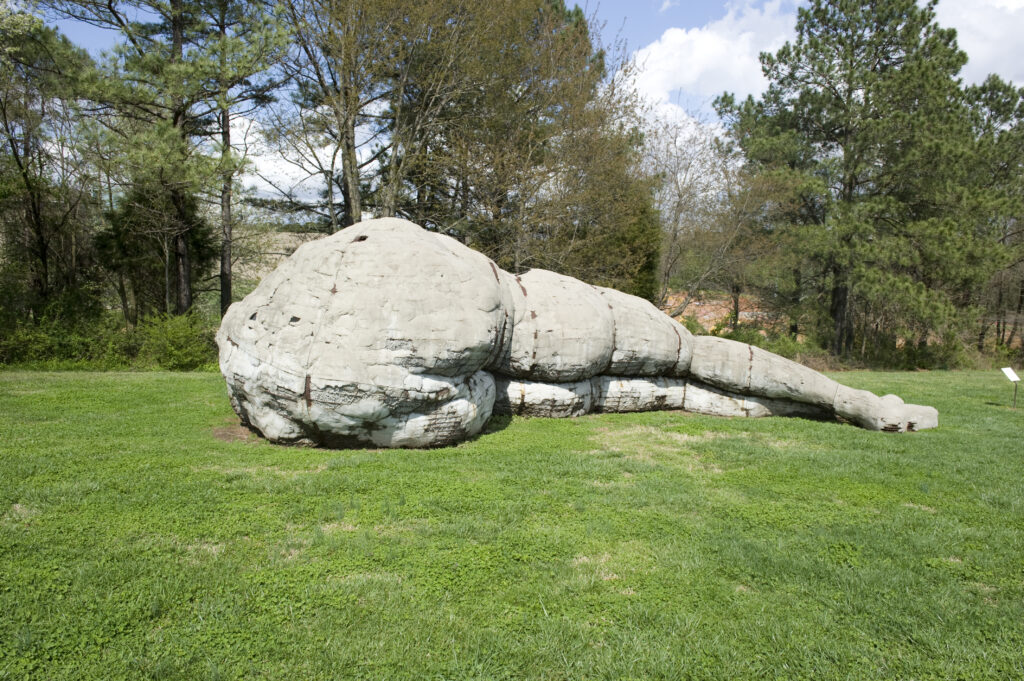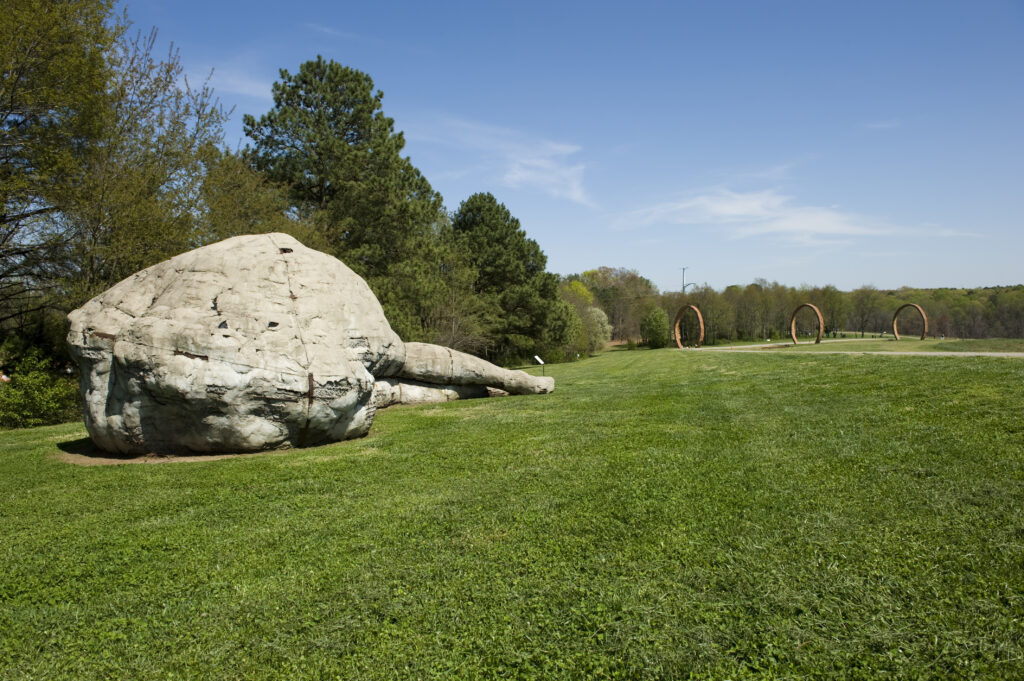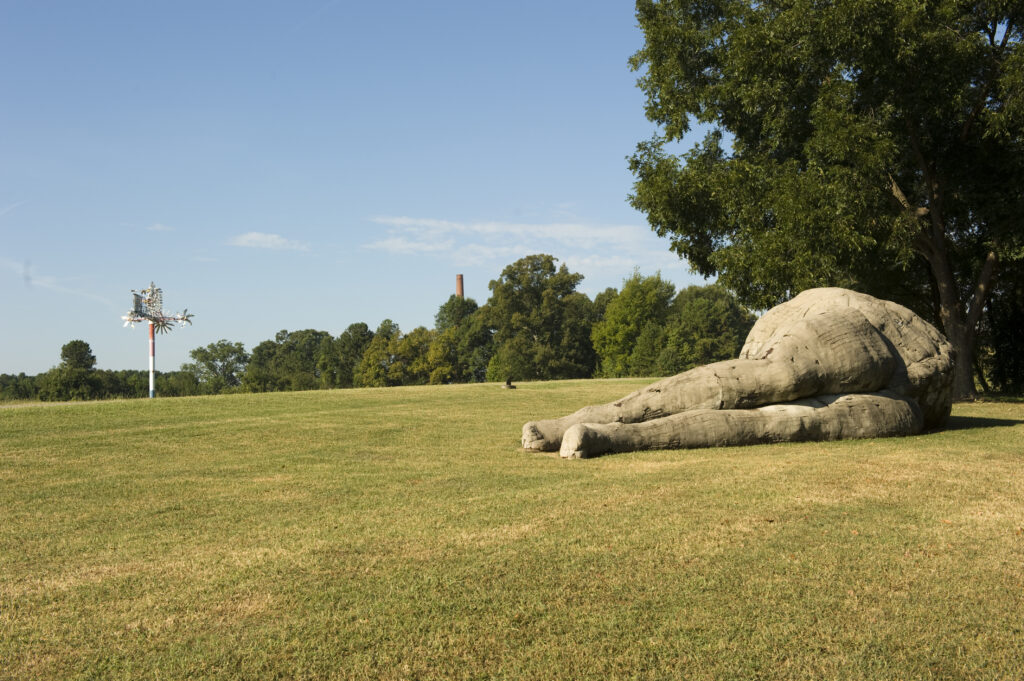Collapse I (work of art)
Artwork Info
Key Ideas about this Work of Art
- This sculpture appears to be solid, but it is actually hollow inside. It is made up of a welded steel frame that is covered with metal mesh and poured concrete.
- South African artist Ledelle Moe creates gigantic, hollow sculptures of human heads and figures.
- Moe originally built this sculpture as a site-specific work for Socrates Sculpture Park in Queens, New York.
- In 2007 the sculpture was brought to the NCMA (in several pieces) and Moe reassembled it.
- The sculpture’s surface is showing signs of wear after years of exposure to the weather and changing seasons. The artist says this weathering process represents “the inevitable decay of the body.”
Learn More
This 30-foot-long, hollow sculpture is made up of a welded steel frame that is covered with metal mesh and concrete. The artist, Ledelle Moe, poured the concrete on top of the mesh and molded it while it was wet. According to her, this sculpture is designed to “stretch the scale of the body to echo the contours of the landscape.”
Moe is a contemporary sculptor from South Africa. She is best known for creating large-scale, hollow sculptures of human heads and figures. Her work often explores themes of strength and vulnerability. She originally created Collapse I as a site-specific work in Socrates Sculpture Park in Queens, New York. When she creates site-specific work, she gathers sand and dirt from that place and adds it to the concrete that she pours over her mesh-covered structures. This connects her work to the place where she creates it. Her use of sand and dirt from each build site also results in unique colors and textures in her work.
In 2007 this sculpture was delivered to the NCMA in three separate pieces. Moe reassembled most of it herself. After years of being exposed to the weather, the sculpture’s surface now resembles aging skin. Moe approves of this natural weathering process. She says it represents “the inevitable decay of the body.”
Collapse I is currently on loan from the artist, along with another outdoor sculpture she created. Moe’s work, Untitled, is located beside a wooded trail in the Museum Park.
There are many applications of concrete that are quite fleshy. It’s so often cast into geometric shapes—cast concrete, slabs, water pipes, and things like that, but it also undulates, and spills, and pours, and oozes into all sorts of wonderful magical shapes.
Ledelle Moe
Additional Resources
Resources for Teachers
- Read an article about Moe’s experience creating her sculptures.
- Watch a video of the artist discussing two of her works.
- Read a review of the artist’s large works of art.
Resources for Students
- Read an article about Moe’s work.
- Visit the artist’s website to see a virtual gallery of her work.
- Watch a slideshow of the artist creating a sculpture.



